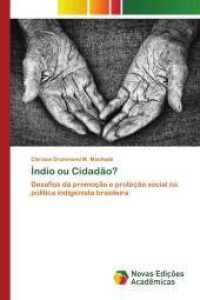- ホーム
- > 洋書
- > ドイツ書
- > Mathematics, Sciences & Technology
- > Medicine & Pharmacy
- > natural medicine and homeopathy
基本説明
伝統的な漢方医療で利用される薬草に関して、医薬品としての利用と現代の科学的な情報をあわせて提供するユニークなレファレンス。231のモノグラフをアルファベット順に収録し、約300の重要な薬草を詳述。附録には中国薬局方に基づく薬草リストを収録。
This two-volume guide combines the medicinal applications of a comprehensive range of herbs from traditional Chinese medicine with modern day scientific information. In a rapid access, A-Z format, this ready reference contains more than 300 chemical structures of active ingredients, supported by chemical, pharmacological and toxicological data, and backed by some 8,000 literature citations. With its listing of the complete Materia Medica of plant origin from the Chinese Pharmacopoeia, this work is highly relevant to experimental practitioners in the medicinal and pharmaceutical fields and the only one to provide such a wealth of chemical data.
Full Description
Synergizing herbal medicine with clinical science, this two-volume guide combines the medicinal applications of a comprehensive range of herbs from traditional Chinese medicine with modern day scientific information. In a rapid access, A-Z format, this ready reference contains more than 300 chemical structures of active ingredients, supported by chemical, pharmacological and toxicological data, and backed by some 8,000 literature citations. With its listing of the complete Materia Medica of plant origin from the Chinese Pharmacopoeia, this work is highly relevant to experimental practitioners in the medicinal and pharmaceutical fields and the only one to provide such a wealth of chemical data.
Contents
The book is divided into 231 monographs describing ca. 300 significant Chinese Medicinal Plants, in alphabetical order. Each monograph contains: - botanical information - medicinal application - chemistry, incl. chemical structures of chemical - constituents - pharmacology - toxicology - references, including previously untapped Chinese sources Contains an appendix with a listing of the complete Materia Medica of plant origin from the Chinese Pharmacopoeia.






